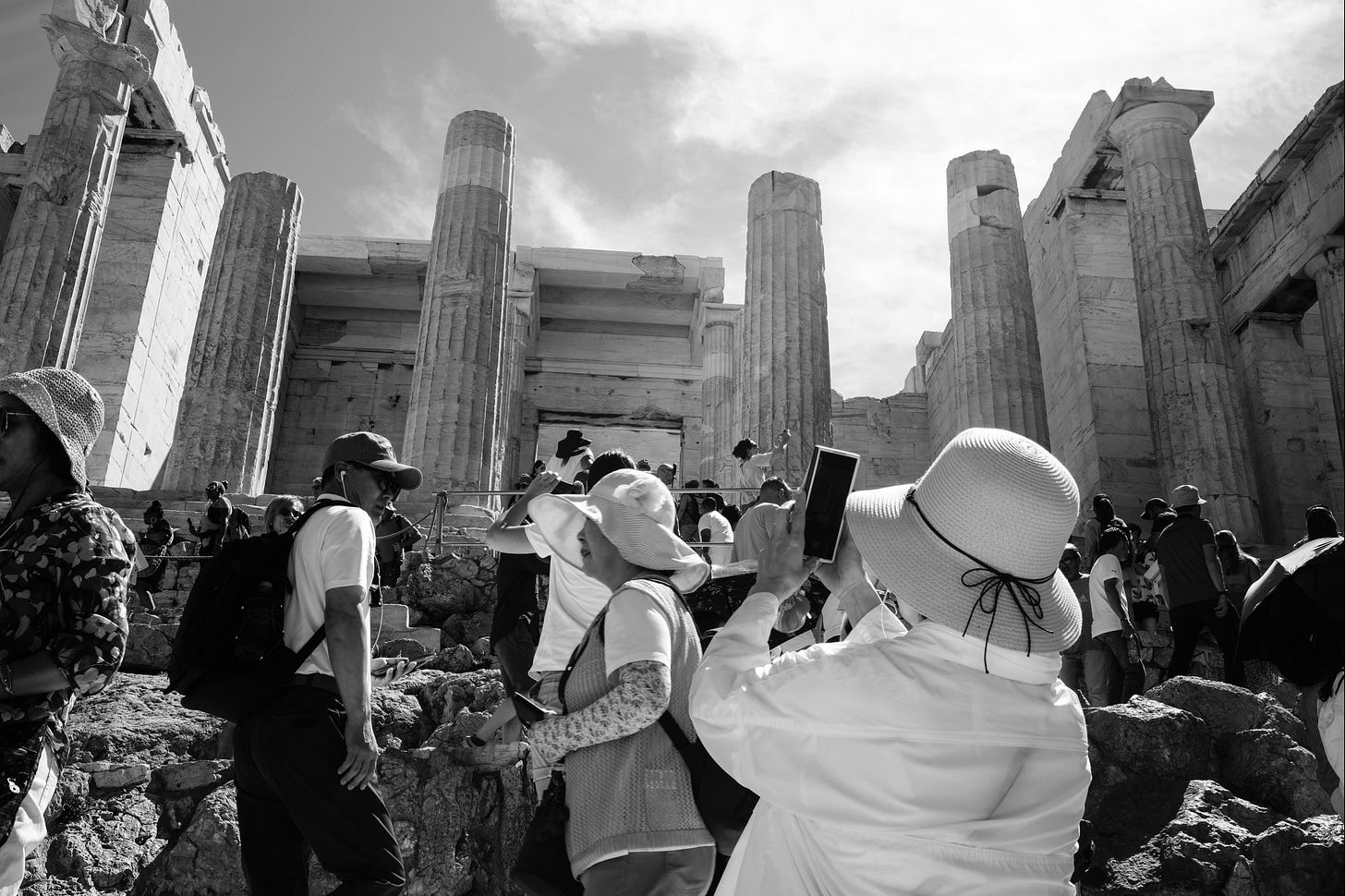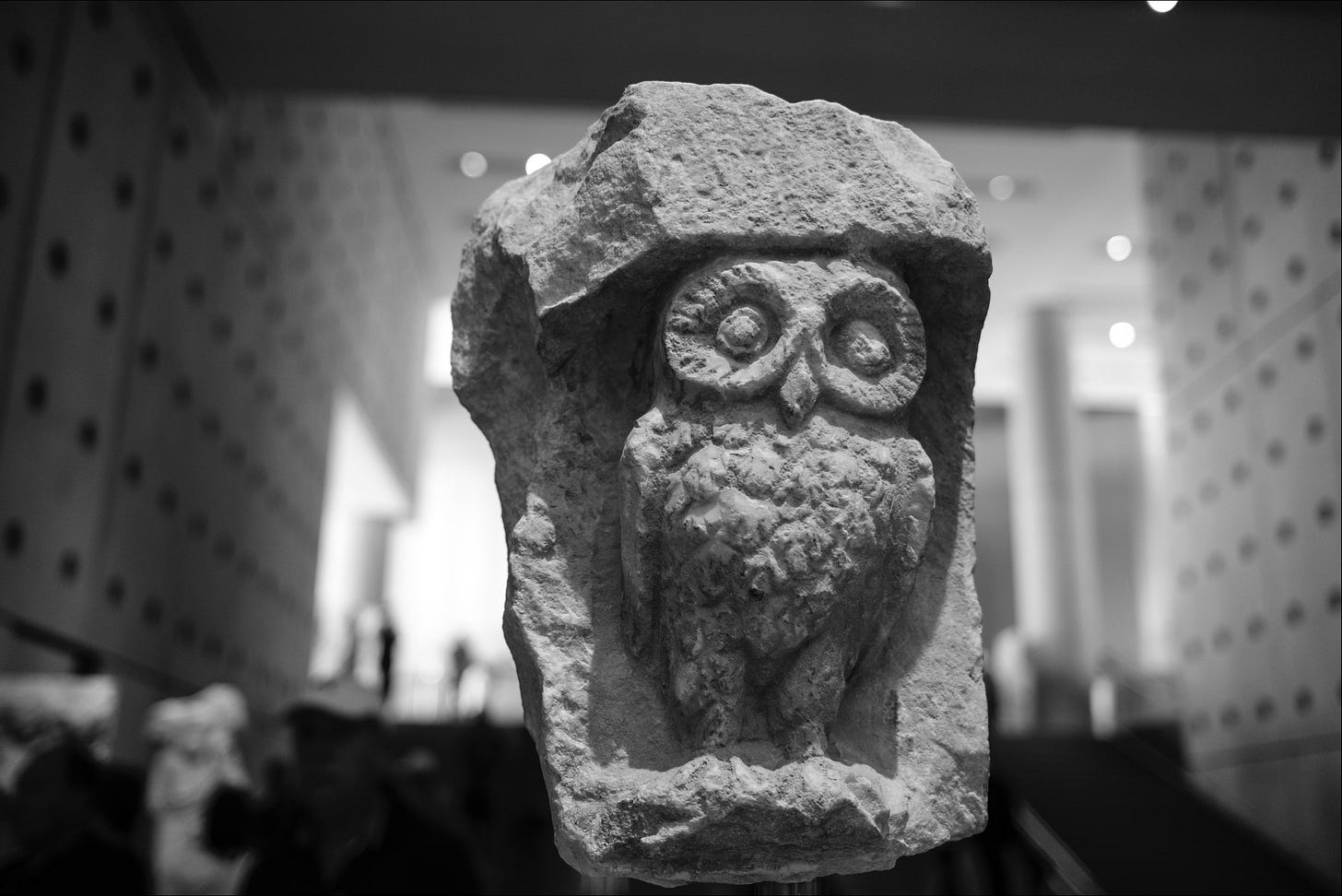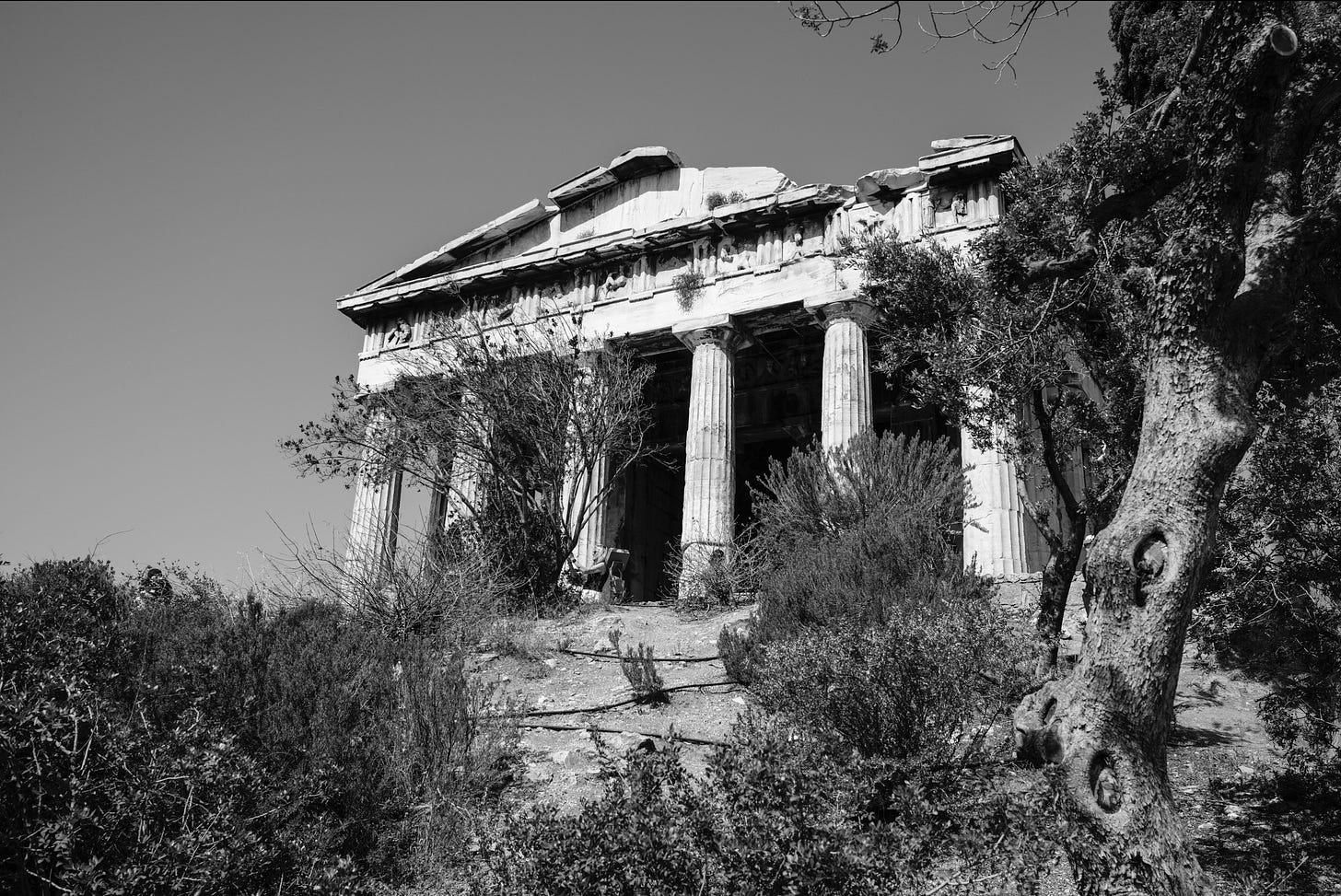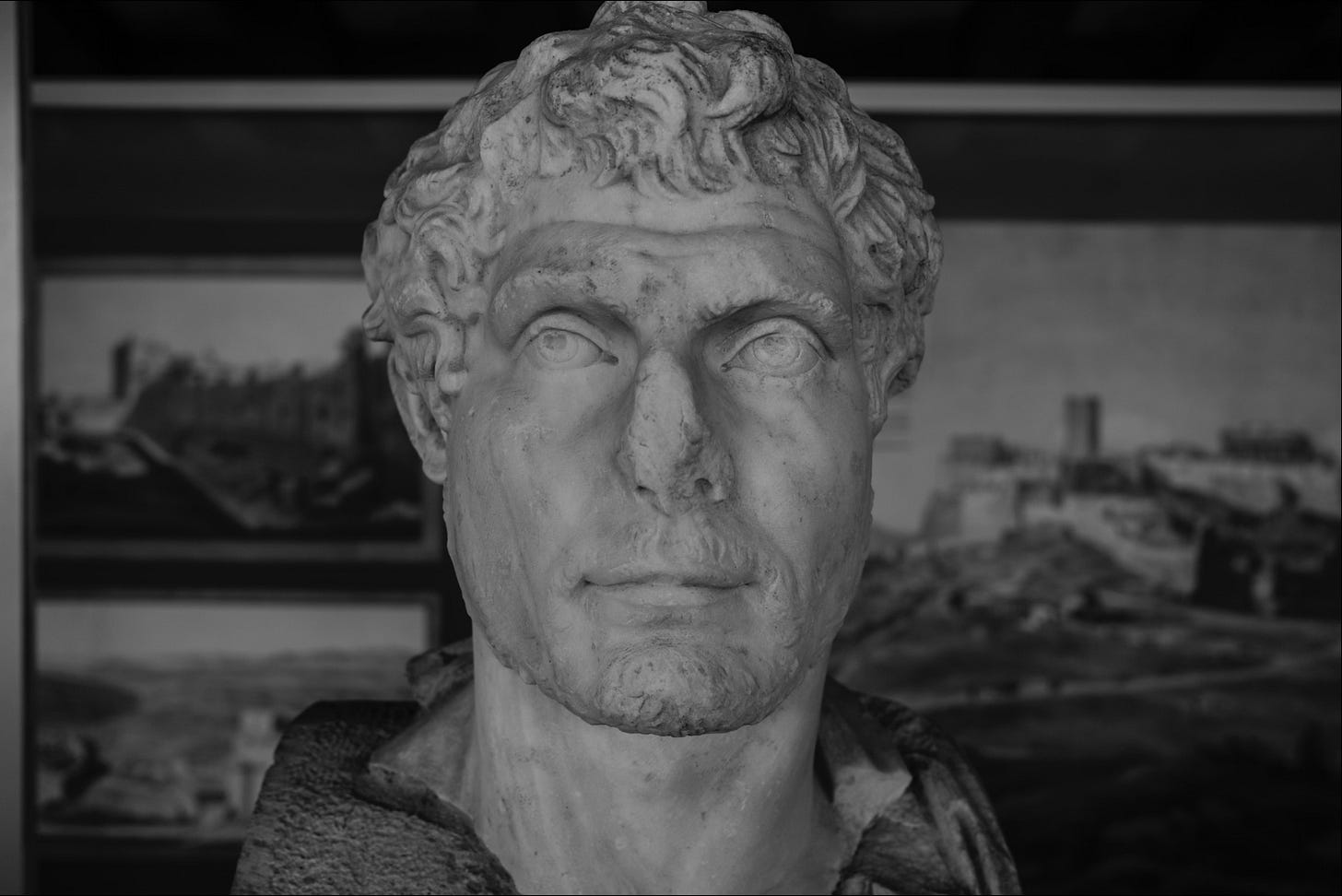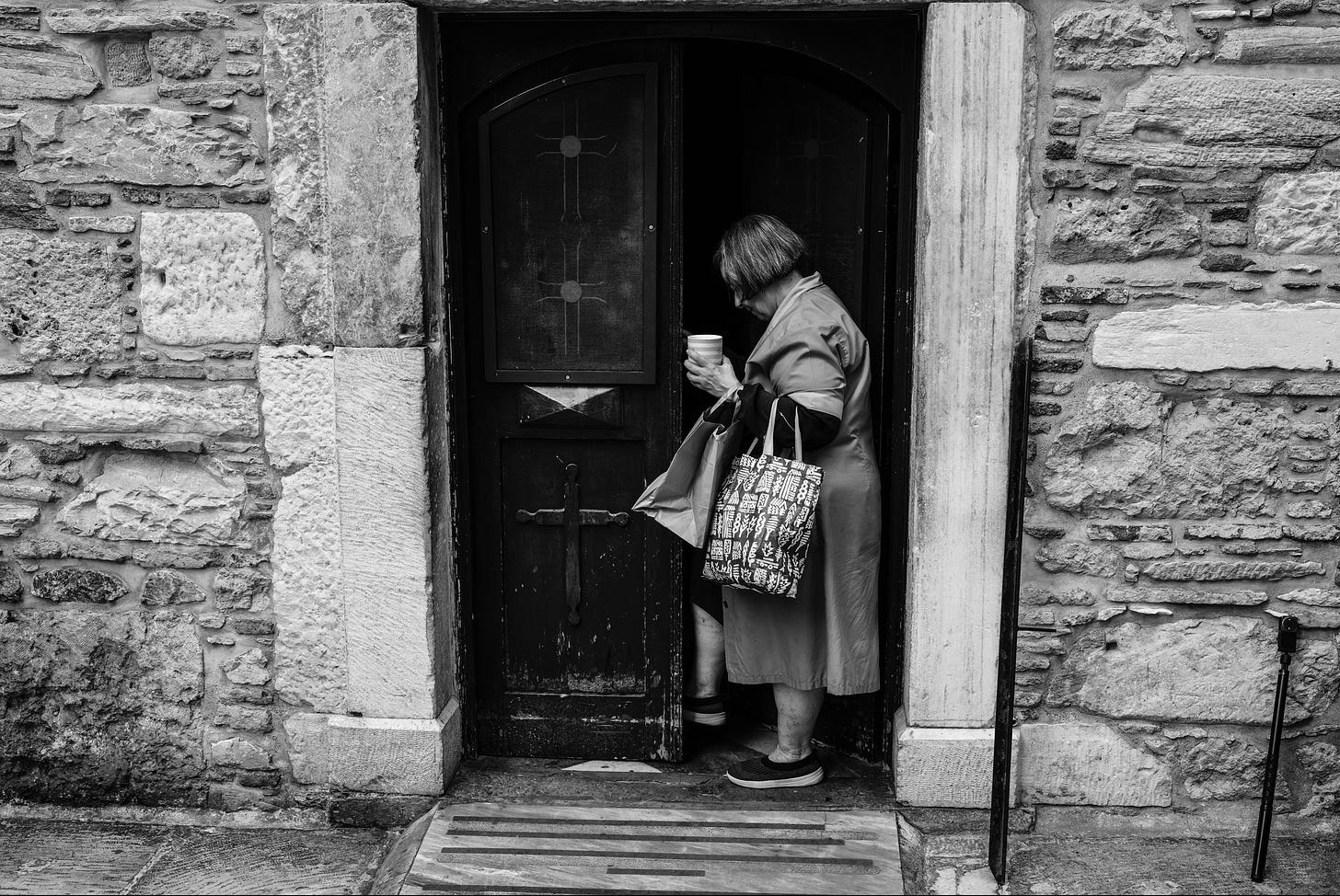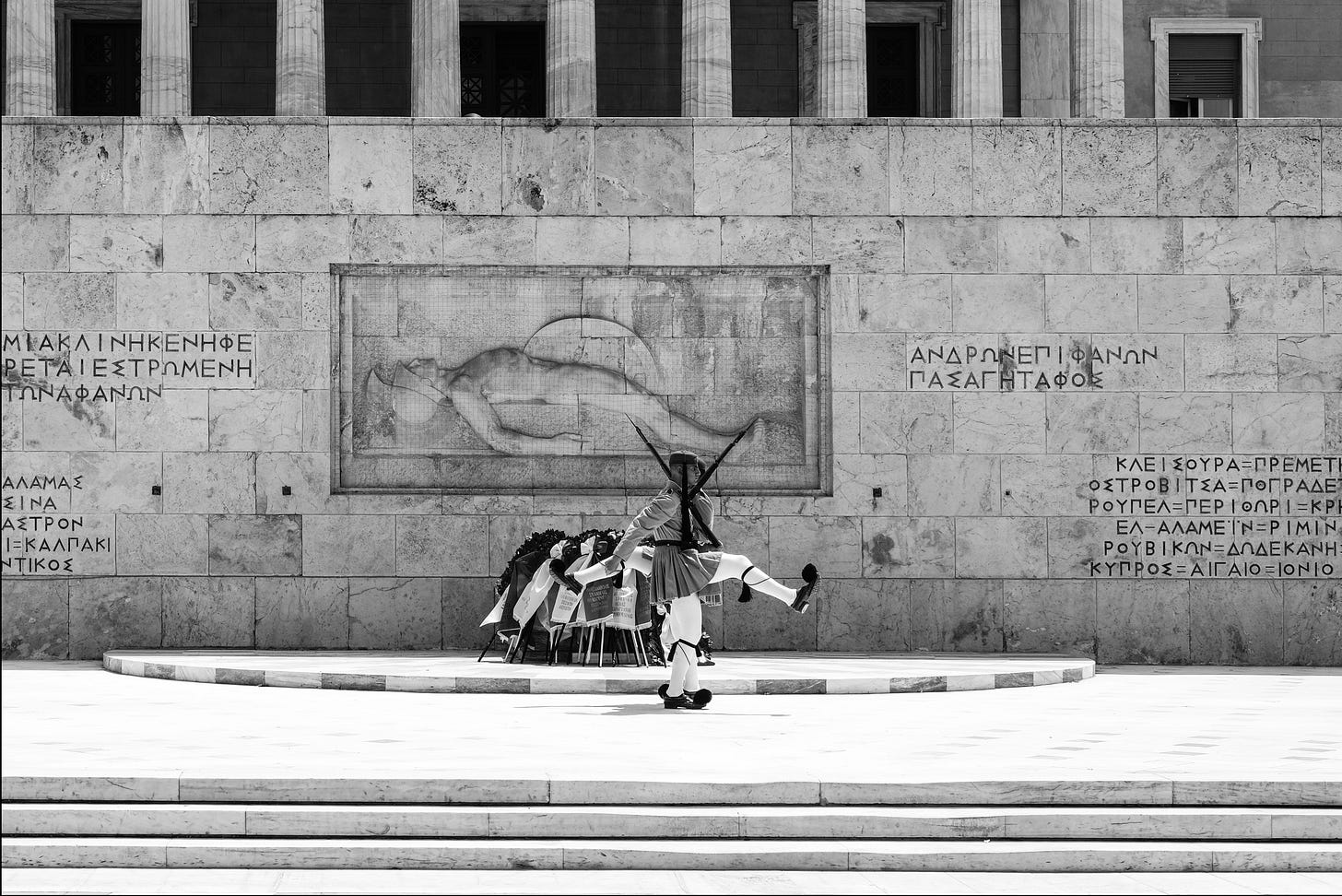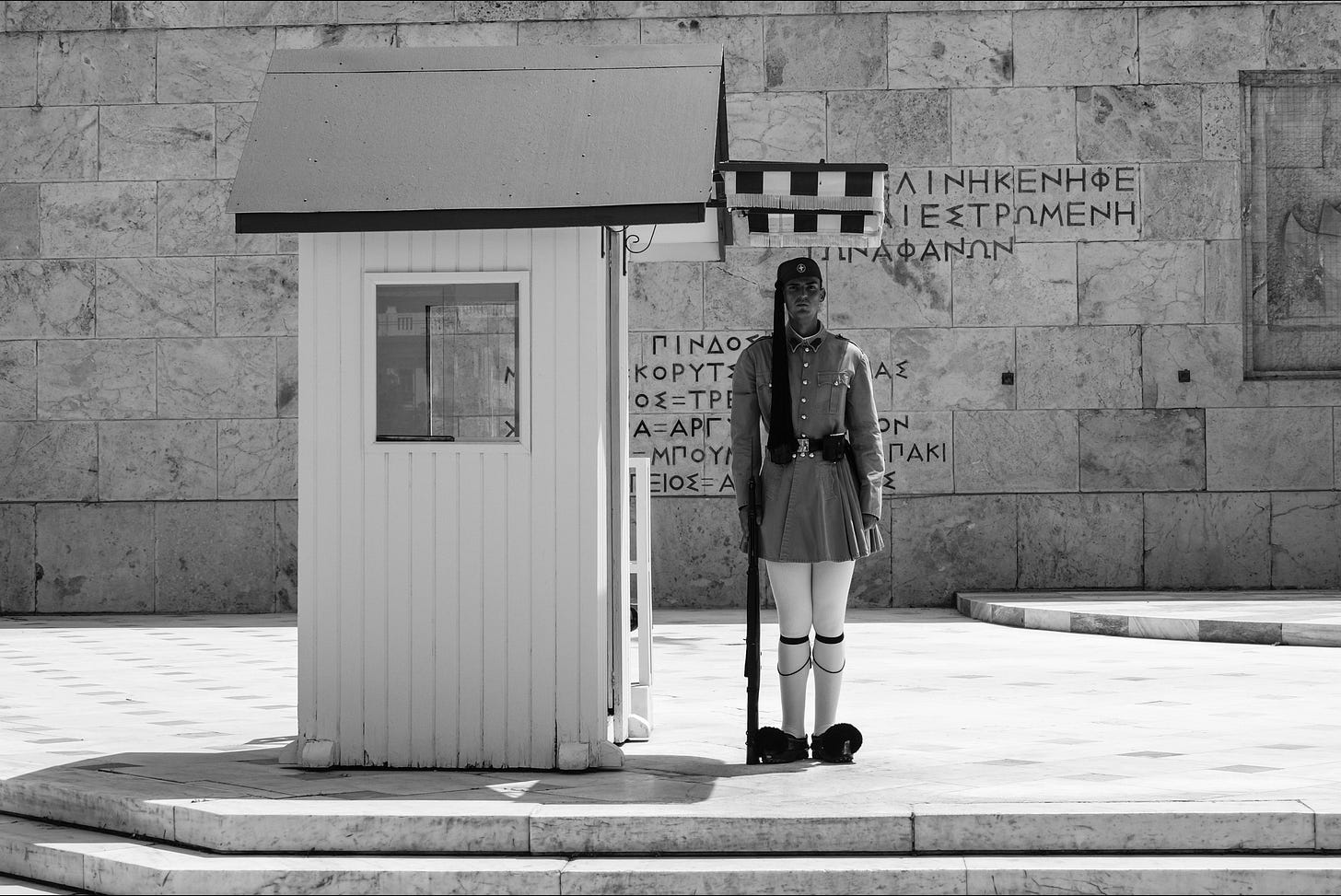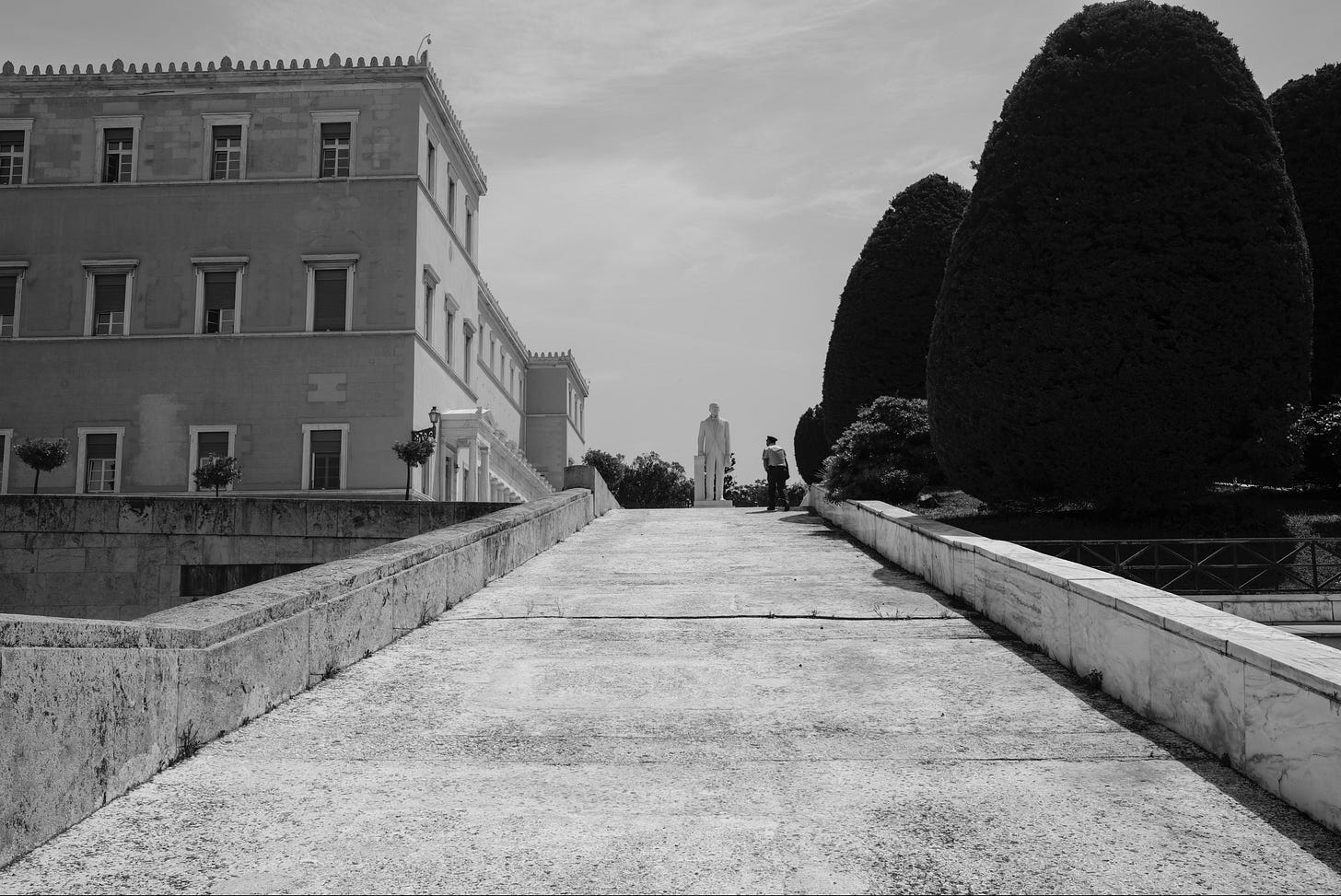Don DeLillo’s novel The Names is set in Athens in the early 1980s and works as sensory guide to how the city feels to an outsider: its rhythms, its foibles, its light and shade.
The story is told through the eyes of a rootless American called James Axton whose job involves analysing the potential risk to multinational corporations of terrorism, revolution and unrest.
The novel opens like this:
For a long time I stayed away from the Acropolis. It daunted me, that somber rock. I preferred to wander in the modern city, imperfect, blaring. The weight and moment of those worked stones promised to make the business of seeing them a complicated one. So much converges there. It’s what we’ve rescued from the madness. Beauty, dignity, order proportion. There are obligations attached to such a visit.
This chimed with me. Until this year I had never been to Greece. I have no idea why not. As a result I always felt a pang of inadequacy whenever the subject of Greek antiquity came up in conversation or reading. My reference points were few and indistinct. I had no solid ground.
So going to the Acropolis was a big deal for me. My hope was it would bring perspective and depth to what had previously been just a drawing-board elevation.
Maybe I had invested too much in what was, after all, just a morning of sightseeing. I mean, I totally loved it. But like many of the world’s big-ticket cultural attractions it was hard to see beyond the mass of humanity who had made the same pilgrimage. I found myself as interested in the tourists as the ruins.
The nearby Acropolis Museum managed to make the Parthenon comprehensible as a building, filling in the gaps and showcasing the statuary that adorned the pediments. This is a world-class museum, designed by the Swiss architect Bernard Tschumi, and it makes a mockery of the British Museum’s long-standing cavil that the Elgin Marbles can only be shown to their full advantage in London.
Like my friend Ian Rankin, who I had asked for advice on what to do in Athens, I found the Ancient Agora at the bottom of the hill a much more satisfying experience than the Acropolis. This was the old town centre of classical Athens. Here Socrates taught philosophy, St Paul preached the Good News and democracy was born. Less crowded, and softened with greenery, it was on more of a human scale. For me, it was much easier to make the necessary two thousand year mental leap. And the Temple of Hephaestus, smaller and more complete than the Parthenon, was the time machine I needed.
Modern Athens was a tonic: anarchic, cluttered, insouciant. We were staying in Psyrri, near the chaos of the Monastiraki market, where barely a surface was not covered in graffiti. Our hotel was a former foundry that made metal type for printing presses. Yes, you’re right, my ideal location.
And yes, I tried to get the obligatory picture of a two-headed, four-armed, four-legged, two-gunned soldier at the national parliament building. How did I do?
The second half of our trip was spent on the island of Hydra (pronounced something like eethdra, but I never quite got it right). The reason for coming here was Leonard Cohen. This was where, in the Kodachrome 1960s, the singer-songwriter lived with his Scandinavian lover Marianne Ihlen and her son from a previous relationship in what has come to be regarded as something of an bohemian idyll.
Keep reading with a 7-day free trial
Subscribe to The Jaggy Thistle to keep reading this post and get 7 days of free access to the full post archives.





